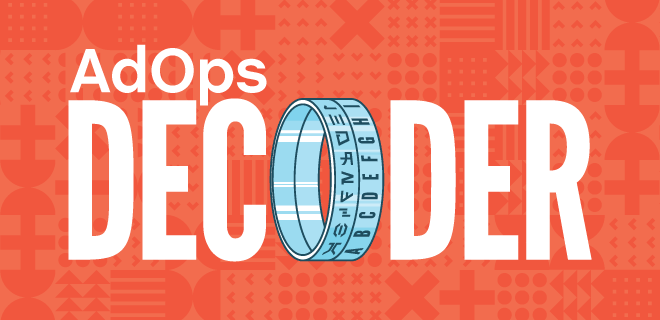
While attention has always underpinned advertising, the rising popularity of attention metrics is a recent phenomenon in digital advertising. Attention Metrics refer to a set of data that can be used to approximate consumer attention to both media placements and creative. These metrics range from loose proxies like viewability to more precise measures like lab or panel-based eye-tracking that record actual gaze and focus.
Given the variability of precision and scale of attention metrics, here are a few best practices to keep in mind:
Define Testing Scenarios to Validate Attention Metrics
Attention (and advertising at large) is a means to an end. As attention metrics become more prevalent, it’s important for both sides of the marketplace to work together and clearly define testing parameters.
Buyers should design tests to help them understand how attention correlates to long-term brand KPIs, to validate attention as an in-flight optimization metric. While this is applicable to testing any new technology or metrics, it’s especially important for attention metrics as different brands or products may require different types of attention to have an impact.
Sellers meanwhile, should focus on how attention metrics can provide long-term learnings around site-design, UX, and placement layout. By focusing on these longer-term insights, publishers can improve the overall attentive quality of their inventory and be best positioned to capitalize on any shifts towards attention metrics generally.
Consider the Experience
User and ad experience play a pivotal role in the quality of attention captured. Forced or non-skippable ad experiences may appear to capture a greater quantity of user attention, in terms of viewable duration for example, but at the expense of the quality of attention.
When people are forced to watch a non-skippable preroll or shown an interstitial with a tiny close button, the quality of that attention trends lower. Conversely when people choose to spend time with a skippable video ad or a larger coverage ad, the quality of attention is higher because it becomes a stronger signal their interest and choice.
Tension Between Creative, Audience, and Media Placement
Duration is one of the most important factors in measuring attention, so it’s worthwhile to understand what actually drives duration in different contexts. Creative is the primary driver of duration in larger format ads like full-screen or skippable pre-roll ads, whereas media placement quality matters more for smaller formats like standard banners.
As the ad format gets larger, there is typically a greater amount of user control over the ad experience—so we can infer that duration is indicative of that user’s interest in the creative. Conversely, smaller ad formats tend to appear adjacent to content, which means that duration is more likely driven by the content itself and not necessarily the ad.
Look Beyond Duration
Sophisticated marketers are looking at metrics that reflect the quality of media and placement in addition to duration, to more accurately estimate the likelihood of attention across a buy. Factors like ad clutter, ad coverage or “real estate,” and even page position may all impact the likelihood of attention.
For example, research from Lumen found that both ad clutter and page position play crucial roles in the amount of attention paid to advertising. They found that the attention per ad decreases as there are more ads in-view at any given time. Additionally, they’ve shown that while above-the-fold placements are more likely to be viewed, they actually receive less attention than below-the-fold placements since users are more engaged as they scroll down a page.
Attention Is More Context Than Audience
Scoring the quality of context is a much better fit for attention metrics – since attention metrics predict the likelihood of attention being paid to creative, and not actual attention in most cases. That said, there are still useful ways to map attention data to audiences.
The cumulative attention per user can be used as a creative sequencing or attribution tactic. Attention Metrics per user can help you understand how much attention a person may need over the course of a flight to be impacted. To that end, linking attention data to user data offers a more precise way to cap ad-delivery than impression frequency, which is an incredibly inconsistent measure.
In conclusion, attention metrics are still fairly nascent, but as cookies and online identity face existential threats over the next few years, the adoption of alternative proxies for value, like attention metrics, are likely to grow. Keeping these best practices in mind will help both buyers and sellers navigate the many shapes and sizes of attention measurement in the years to come.